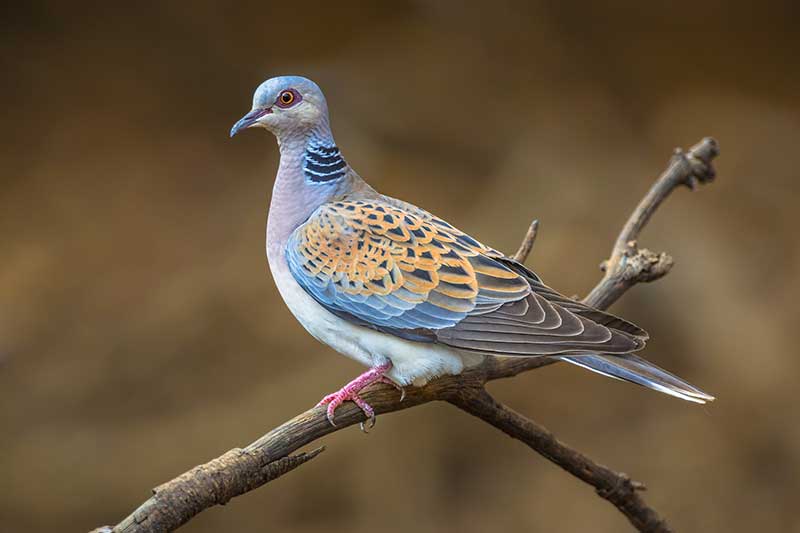Main Menu

Famous as the gift given on the Second Day of Christmas and a symbol of devoted love, the European turtle dove holds a special place in culture and tradition. However, its numbers are rapidly declining across Europe, including the UK, due to changes in farming practices and hunting in Mediterranean countries.
Since the introduction of a hunting ban in France, Spain, and Portugal, the breeding population has shown signs of recovery in the western Mediterranean region.
Breeding birds: 14,000 territories
Family: Pigeons And Doves
The adult male turtle dove has a grey-brown mantle with dark scaling, while the rump and lower back have a subtle blue-grey tinge. Its pale chestnut upperwing has a striking scaled pattern on the inner wing coverts and scapulars. The flight feathers are dark grey with fine white edges. The uppertail coverts and central tail feathers (rectrices) are grey, while the outer tail feathers are darker with a white terminal bar and white outermost feathers.
The upper throat is white, and the lower throat and breast are pinkish-grey, blending smoothly into a white belly and undertail coverts. The flanks are pale grey, the underwing is blue-grey, and the undertail is black and white.
The head is blue-grey, with a darker crown and nape, and has a distinctive black-and-white striped patch on either side. The bill is black, the eyes are light orange with a dark pink eye-ring, and the legs and feet are pink. Female turtle doves closely resemble males but may appear slightly duller in colour.
Juveniles are noticeably duller and browner than adults, lacking the characteristic striped patch on their neck.
Try our interactive bird identifier
The turtle dove begins breeding in May and typically raises 2 or 3 broods per season, though more may be attempted if a brood is lost. Like other members of its family, it is monogamous and forms lifelong pairs. The species nests in dense hedgerows, thickets, shrubs, and trees, favouring thorny vegetation.
The male gathers nesting materials, which the female uses to construct a loose platform of twigs, lined with grass and leaves, positioned 2 to 3 metres above the ground. Nest building happens only in the mornings and takes about 7 days.
The female lays 2 white eggs, which are incubated by both parents for around 2 weeks. The chicks are altricial at birth, relying on their paresnts for food and care. They fledge approximately 20 days after hatching and reach sexual maturity at 1 year old.
Turtle doves primarily feed on seeds and fruits from weeds and cereals, including oilseed rape, chickweed, and sunflowers. They also supplement their diet with berries, fungi, and occasionally insects, snails, and worms. Foraging is mostly done on the ground.

Turtle doves are found mainly in the south east of England on the edges of woodland and in open land with bushes and shrubs during the summer. Passage birds can be spotted in north east Scotland.
Turtle doves are mentioned in the Song of Solomon. ‘The time of the singing of birds is come, and the voice of the turtle is heard in our land’ was quoted by Detroit Tigers sportscaster Ernie Harwell before the start of each spring season.